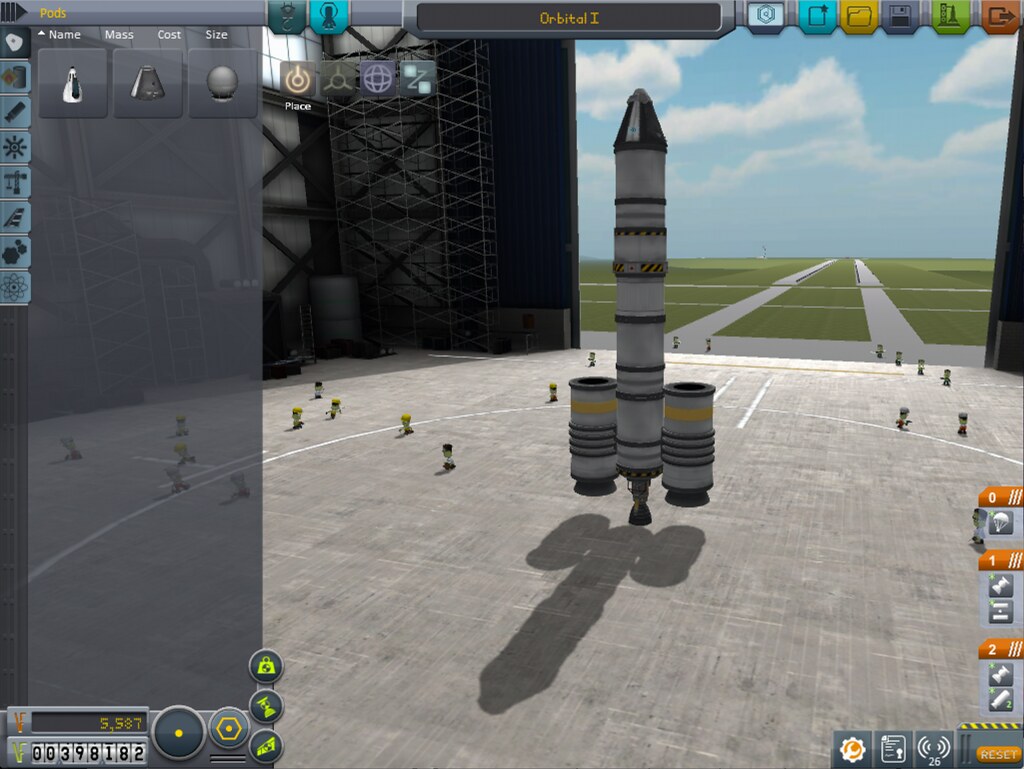Step into the realm of game technology, where worlds are constructed and dreams come to life. Behind the mesmerizing graphics and realistic physics lies a sophisticated tapestry of technical principles. In this article, we embark on an exhilarating journey to unravel the secrets of game development, revealing the intricacies behind the magic that captivates millions of players worldwide. Join us as we peel back the layers, deconstructing game technology to expose the hidden gears and mechanisms seamlessly working in unison, breathing life into the digital universe. Prepare to be enthralled as we dive into the world of pixels, polygons, and codes, exploring the fundamental principles that intertwine to shape the captivating virtual landscapes we lose ourselves in. Are you ready to embark on this adventure, where creativity and technicality merge into a symphony of innovation? Let us ignite your curiosity and guide you through the fascinating underpinnings of game graphics and physics. Brace yourself for an exploration that will leave you with a newfound appreciation for the technical marvels that bring your favorite games to life.
1. Crafting Immersive Visual Experiences: Unraveling the Secrets of Game Graphics Engines
Embark on a journey that unveils the mesmerizing world of game graphics engines! In this post, we delve into the intricate art of crafting visually captivating experiences that immerse players into virtual realms. Discover the secrets behind extraordinary game graphics engines that seamlessly blend cutting-edge technology with boundless creativity, pushing the boundaries of visual storytelling to new heights.
Embodied within these engines lies the artistry of graphic designers, programmers, and architects who work in harmonious synergy to breathe life into virtual landscapes. From breathtakingly realistic simulations to fantastical realms that transport players into alternative dimensions, these engines are the cornerstone of game development, enabling an experience akin to stepping into a living, breathing work of art. Breakthroughs in graphic rendering, dynamic lighting, and hyper-realistic physics simulations are all part of the arsenal utilized by game developers who strive to create visually stunning masterpieces.
- Unleash your inner explorer and gain insights into the technical wizardry employed behind the scenes of game graphics.
- Discover how game graphics engines meticulously construct a seamless, believable virtual world that captivates the senses.
- Unlock the prismatic palette of visual effects, from dazzling particle systems to intricate texture mapping.
- Delve into the science of rendering, where polygons, shaders, and texture resolution seamlessly intermingle.
Ready yourself for an awe-inspiring deep dive into the realm of game graphics engines, where artistry and technology collide, giving birth to awe-inspiring realms that transport players beyond the realms of imagination.

2. Behold the Power of Physics Engines: Exploring the Building Blocks of Realistic Game Environments
In the world of video games, one crucial element that brings virtual environments to life is a powerful physics engine. These complex programs use mathematical algorithms to simulate the laws of physics and allow game developers to create realistic and immersive gameplay experiences. Whether it’s the way objects interact with each other, how gravity affects movement, or even the satisfying destruction of structures, physics engines are the unsung heroes behind the magic of game design.
One of the building blocks of a realistic game environment lies in the behavior of objects. By incorporating physics engines, game developers can accurately simulate how different materials and objects interact with each other. From solid structures to the fluidity of water, these engines calculate the forces, collisions, and torque applied to each element, resulting in lifelike movements and interactions. Want to see a stack of crates tumble down or witness a car’s suspension system respond realistically to rough terrains? Physics engines make it possible, enhancing the believability and immersion of the game world.
3. Optimizing Performance: Unleashing the Full Potential of Game Technology through Technical Strategies
When it comes to gaming, the pursuit of ultimate performance is an unyielding quest. To truly unleash the full potential of game technology, one must delve into the realm of technical strategies. These strategies aim to push boundaries, maximize efficiency, and ensure seamless gameplay experiences that leave players mesmerized. Here, we explore two powerful techniques that can take game performance to unprecedented heights.
1. Advanced Asset Streaming: In the world of gaming, seamless immersion is paramount. By implementing advanced asset streaming techniques, developers can banish pesky load times and create an uninterrupted gaming experience. This technique divides game assets into smaller, manageable chunks that are loaded as needed, reducing the time it takes to access and render game elements. By intelligently streaming these assets in the background, games can maintain a fluid and responsive interface, allowing players to seamlessly explore vast open worlds or engage in action-packed battles without any noticeable interruptions.
2. Parallel Processing: The advent of powerful multicore processors has revolutionized game development. To harness this potential, developers can leverage parallel processing to distribute computing tasks across multiple cores, effectively increasing performance and optimizing resource utilization. By breaking down complex operations into smaller tasks that can be executed simultaneously, games can achieve stunning graphics, intricate physics simulations, and realistic AI behaviors. Parallel processing not only delivers a visually stunning experience but also enables developers to push the boundaries of what was once deemed impossible, immersing players in breathtaking virtual worlds that showcase the full extent of their hardware’s capabilities.
4. Expert Tips for Game Developers: Leveraging Cutting-Edge Techniques to Enhance Graphics and Physics
When it comes to creating immersive gaming experiences, graphics and physics play a crucial role in captivating players. As a game developer, staying ahead of the curve and mastering cutting-edge techniques can elevate your game to new heights. Here are a few expert tips to help you enhance your graphics and physics:
- Embrace real-time ray tracing: Real-time ray tracing is the latest breakthrough in graphical rendering that simulates how light interacts with virtual objects. By incorporating this technique, you can achieve astonishingly realistic visuals with accurate reflections and shadows, enhancing the overall visual fidelity of your game.
- Implement physics-based animation: Gone are the days of rigid character movements. Take advantage of physics-based animation systems to create lifelike interactions between objects and characters. Whether it’s simulating realistic cloth, fluid dynamics, or even the subtlest of facial expressions, embracing physics-based animations can add an extra layer of immersion to your game.
- Utilize procedural generation: Tired of manually designing every element in your game world? Try incorporating procedural generation techniques into your workflow. By using algorithms to generate content dynamically, you can create vast and diverse landscapes, intricate textures, and even unique gameplay scenarios, all while reducing the time and effort required for manual asset creation.
Distilling constant improvements in graphics and physics into your game can truly captivate players and set your game apart from the rest. With these expert tips at your fingertips, you’re well on your way to leveraging cutting-edge techniques for breathtaking visuals and immersive gaming experiences.
In Conclusion
As we delve into the intricate world of game technology, a mesmerizing universe has unfolded before our very eyes. We have unveiled the hidden technical principles behind graphics and physics, unraveling the threads that unite aesthetics and engineering. From the ethereal landscapes that transport us to uncharted realms, to the visceral collisions that bring virtual worlds to life, game technology is an art form fused with scientific marvels.
In this journey of deconstruction, we have encountered a symphony of pixels dancing harmoniously across screens, transforming mere lines of code into vibrant masterpieces. We have marveled at the prowess of graphic engines, honed with precision to paint breathtaking landscapes that seem to transcend reality itself. Each pixel meticulously placed, each texture lovingly rendered, manifesting in awe-inspiring visual experiences that ignite our imagination.
But graphics alone do not weave the fabric of these virtual realms. Physics – the fundamental bedrock of our reality – lends its wisdom to the design of immersive game worlds. Through meticulous calculation and algorithms, objects collide, fluids flow, and forces exert their influence. The laws of physics, once constrained to textbooks and laboratories, manifest in virtual environments, creating an unparalleled sense of realism and interactivity.
As we conclude our exploration of game technology’s technical principles, we come to appreciate the symbiotic relationship between art and science. Bound by an unbreakable thread, these two seemingly disparate worlds merge effortlessly within the confines of a game, captivating our senses and engulfing us in a symphony of innovation.
So, the next time you find yourself lost in the realm of a video game, take a moment to appreciate the science and artistry that lie beneath the polished veneer. Gaze at the pixels that transport you to fantastical realms, and feel the invisible forces that dictate the interactions of objects. For in that realization lies the true beauty of game technology – where creativity and technology intertwine, forever reshaping the boundaries of human imagination.
For many video game fans, the technical elements behind graphics and physics in their favorite games are a mere detail in the realm of their gaming experience. However, game technology is a composite of complex functions that relies on sophisticated algorithms and software development to allow players to perform complex tasks in virtual realities. This article will seek to deconstruct the technology behind graphics and physics in gaming systems to offer a more holistic look into the fundamental principles that drive the gaming industry forward.
At the most basic level, games are composed of a series of two-dimensional images. These images are then manipulated by software called the graphics engine to simulate a three-dimensional world. When players move their characters or objects within the game, their movements are tracked by computer algorithms and then presented through a series of calculations that manipulate the lighting, textures, and color of the scene on the game. Thanks to advancements in technology, game designers have become increasingly sophisticated in their use of graphics engines to create ever-increasingly realistic visuals.
In addition to the visuals, physics forms the basis for the realism of games. Physics engines simulate the effects of gravity, friction, and other principles of physical matter in the game. This physics simulation makes it possible for players to interact with their environment in realistic ways and fabrics a virtual world according to the forces of nature. Without the physics engine, a game’s immersion may be drastically hampered and feel far less realistic.
Game developers often strive to create a gaming experience that feels lifelike and that is where graphics and physics come into play. By utilizing the principles of simulation and computing, these elements combine to create an interactive and believable environment for players. Today’s game developers have honed these principles to craft unimaginable, lifelike worlds for gamers to explore and enjoy.



